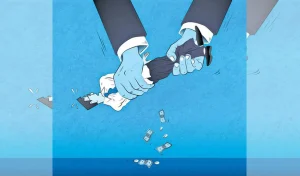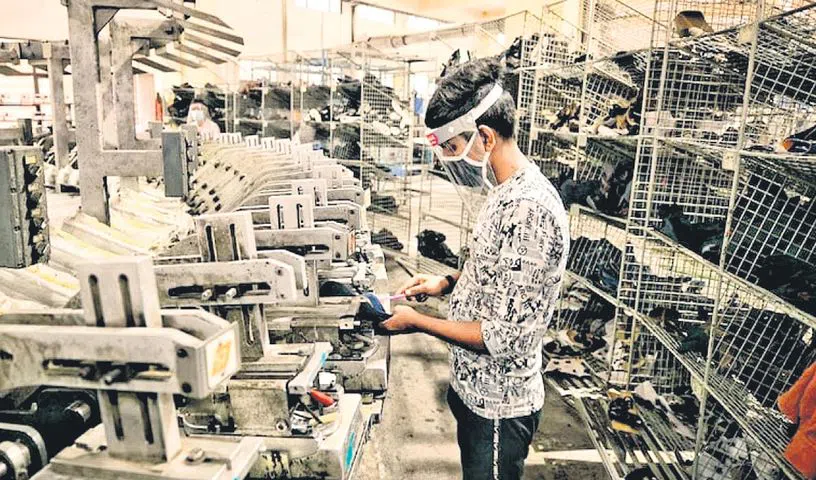Recently I travelled by road through rural Karnataka and Telangana. What I saw was contrary to the common narrative of rapidly growing prosperity across India. While abject poverty was thankfully absent, I still saw a lot of micro traders — selling from vegetables to fruits to flowers. While many were women, I surprisingly saw a lot of men in the middle age (35-plus) sitting idle and waiting for an occasional customer. My mind wandered. How come there is so much economic disparity in this shining India? Is the India we normally see a make-believe India?
I decided to analyse an insightful report ‘Indus Valley Annual Report 2024’ published by Blume Ventures. The interesting part of this report was its drilling down of data beyond statistical averages revealing the underbelly of Bharat. I liked its opening quote: “India’s growth story is precarious. Both the optimists and pessimists are disappointed.”
In India, the positive story is spun by the government in power and the media. But here is the ‘other side’ of the story.
A few data points which hit me very hard and should hit you too:
The crucial story is that 8% of the Indians are hijacking the country’s growth story and one billion Indians are the ghosts in the Indian consumer market. Let the facts, as revealed in the report, speak for itself.
• India’s GDP forecast for FY24 of 6% is the highest among large economies. But we are back to growth rate levels of 5.7% during the 1990-99 decade. The average GDP growth rate for the 42-year period 1980-2022, as per this report, was also 6%. While we may be the fastest among other large nations, why are we not growing faster than our 42-year average?
• India’s GDP of $3.7 trillion hides this stark reality. “India was 140th on the per capita income list, at $2,600. Bangladesh ranked just above us.” Unfortunately, even this $2,600 per capita GDP is misleading because it is the average
• The main constituent of the GDP is private domestic consumption which tells you how people spend their money. The breakup of consumption is very revealing. According to the report, 120 million people annually consume upwards of $15,000 per person and are in the Mexican class, while 300 million people consume approximately $3,000 per person and are in the Indonesian class. Now the stunning part: 1 billion people consume approximately 1,000 USD per person and are in the ‘sub-Saharan Africa’ class, consuming $2.7 per day. They live on daily necessities but have no discretionary spending power
• Even this number is the average of 1 billion people and the truth emerges only when we drill down further and look at the poorest among the 1 billion
• Household Consumption Expenditure Survey 2022-23 revealed that the bottom 5% (45 million Indians ) of the rural population consumed Rs 45 per day and the bottom 5% (25 million) of the urban population consumed Rs 67 per day. Of this, they spent approx 50% on food and, hence, the poorest 5% in urban India spent less than Rs 34 per day on food. Today a thali meal costs more than Rs 50 (Economic Survey 2020) and the poorest 5% in urban India live on two-thirds of a thali meal a day
• The bottom 30% of the rural population (270 million) consumed Rs 82 per day and in urban India, the bottom 30% (156 million) consumed Rs 125 per day. Assuming 50% consumption on food, 30% of our urban poor live on “one thali meal a day”
• Household penetration of two-wheelers is 50% which practically means that the bottom one-third poor have to walk, cycle or take public transport to work
• The 120 million (8% of Indians) are the consuming class which has hijacked the Indian market. Every company focuses on these top 8% and the bottom 1,000 million (71% Indians ) live on necessities and hand-to-mouth, and are left out of our consumer market
• Premium consuming class is even smaller at only 20-30 million (6%) households. They are foreign air travellers, credit card users, broadband users, car owners, demat account owners and mutual fund investors
• So out of 1,400 million Indians, 74 million (5%) file tax returns, 1.5% (22 million ) pay income tax, 0.3% (4.5 million) pay 80% of income tax collected. This means, of the 20-plus million premium households, only 4.5 million pay significant taxes. This shows the tax penetration among the rich is still very low
• What does this mean? The airports, highways, private hospitals, hotels, internet infrastructure, stock market — all work for 8% and most of Indians are not directly benefitting from these huge investments the country makes
• The economic distress among the poor is reflected by the personal loan off-take. Due to unregulated digital apps and banks, and NBFCs lending aggressively, during the five years of FY18-23, personal loan borrowers had grown 12 times to 100 million, while small ticket loans of less than Rs 1 lakh have grown 31 times to 88 million borrowers. Personal loan growth is on the back of poor borrowers
• About 10% of the borrower base are ‘loan stacking’, ie have 5-plus loans and account for two-fifths of the loans. Clearly, some are using it to rotate monies across these loans, and are in a debt spiral
• 25% of the loans in the Rs 50,000 category are NPAs, ie 90-plus days due in July ’23. This has doubled since March ’19
• “At 258 m borrowers, we are nearing the limit of the addressable market for personal credit”, concludes the report. If borrowings are closed, how will the poor dependent on loans manage?
• 97% of Indians have Aadhaar and 35% (500 million) have Jan Dhan accounts. Direct Benefit Transfer amounts reached $87.3 billion in FY23 in both cash and in kind. This constitutes $175 per Jan Dhan account per annum (Rs 40 per Jan Dhan account per day). Compare this to per capita food consumption of Rs 50 per day by the bottom 30% of all (urban and rural) poor. Now you understand the dependency on DBT for survival for the bottom 30% (420 million) of Indians
• Another sign of distress among the poor is the migration to Gulf countries. “India has two sets of migrants — the ‘English’ class and the ‘Exit’ class; the first an elite white collar class, and then the second seeking an exit from economic or social distress”. Indians are the largest migrant community in the world with 18 million who remit over $100 billion. Of these, 6 million are the economic distress migrants who go to the Gulf to work and remit $20 billion in foreign exchange which shores up the rupee
One billion people consume approximately $1,000 per person annually and are in the ‘sub-Saharan Africa’ class, consuming $2.7 per day
In conclusion, the GDP growth story has one good outcome. Our capacity to support the poor will go up with our GDP growth. But this DBT must be supported by tax collection growth which is now showing signs of levelling out. Last year, the DBT was at 17% of all GST and income tax collections of Rs 43 lakh crore. If the tax collections taper off, how can we support the DBT? Will we have to borrow to support the DBT? How do we pull the one billion population out of the sub-Saharan class? Especially in the era of AI which is threatening the employment of our existing workforce, let alone 12 million people who are joining the workforce every year. These are big questions that the Niti Aayog should ponder.


